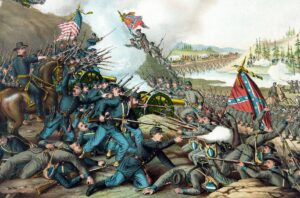A Visionary Sermon Tutorial
A Visionary Sermon Tutorial
In the previous post we considered how to create a visionary sermon. This post will be a visionary sermon tutorial that will help you as you craft a visionary sermon.
Preaching The Visionary Sermon
Here is how Kenton Anderson describes the challenge of preaching the visionary sermon.
 Painting is a powerful metaphor for visionary preaching. Like the painter, the visionary preacher lives at the intersection of deduction and affection. The visionary preacher comes to lay before the listener a big idea, a message that will change their lives. Unlike the declarative preacher, however, this preacher chooses to communicate his or her message by means of a powerful vision of an altered future under God. The visionary preacher paints a picture that will bring the listener-viewer to a point of reckoning Having been exposed to the vision, the listener will have to reckon with what he or she has seen. (p. 219 of Choosing To Preach).
Painting is a powerful metaphor for visionary preaching. Like the painter, the visionary preacher lives at the intersection of deduction and affection. The visionary preacher comes to lay before the listener a big idea, a message that will change their lives. Unlike the declarative preacher, however, this preacher chooses to communicate his or her message by means of a powerful vision of an altered future under God. The visionary preacher paints a picture that will bring the listener-viewer to a point of reckoning Having been exposed to the vision, the listener will have to reckon with what he or she has seen. (p. 219 of Choosing To Preach).
So, how do you go about creating a visionary sermon? That’s the question that needs to be answered in a visionary sermon tutorial for preachers. Here are some steps to follow.
Set Your Vision
Determine the vision. How do you choose a vision? It is in the Bible passage that you are considering, as well as by the message you want your audience to respond to. It is also in the vision that God gives you for a particular church at a particular time. I preached yesterday on Exodus 17, the wonderful passage where Moses is up on the hill with the rod of God while Joshua is in the valley fighting the Amelakites. The vision that I created was the difference prayer makes. It is the key to winning the battles that individuals and churches face. That was an easy vision to choose for the church where I am working, because they have been through a couple of tough years, with several big battles.
Create the Vision
Create the vision. You must create compelling word pictures. Remember, it is similar to the painting of an artist. You become a verbal artist. Then you add other pictures to your overall, big idea picture. Think through this question: What kind of mood do you want the sermon to create? Is it going to be light or dark? Heavy or light hearted. What kind of hopes and fears do you intend to engender? For the sermon on prayer mentioned above, I wanted to create a hopeful environment.
So, I began with the story of a picture of a Civil War battle on the screen and described a battle where 1000 Union  soldiers met 1000 Confederate soldiers in battle. Neither side could break through to victory, even when they had run out of ammunition and were fighting hand to hand. Then 50 fresh Union soldiers showed up. Just their presence won the day. The Confederate soldiers surrendered because they sensed that the balance of power had shifted, even though the 50 soldiers never entered the fighting directly.
soldiers met 1000 Confederate soldiers in battle. Neither side could break through to victory, even when they had run out of ammunition and were fighting hand to hand. Then 50 fresh Union soldiers showed up. Just their presence won the day. The Confederate soldiers surrendered because they sensed that the balance of power had shifted, even though the 50 soldiers never entered the fighting directly.
End With A Challenge
 End with a challenge for people to live out the vision described. In the message on prayer I had paintings on the screen of Moses on the mountain directing the power of God as representing by the “rod of God”.
End with a challenge for people to live out the vision described. In the message on prayer I had paintings on the screen of Moses on the mountain directing the power of God as representing by the “rod of God”.
At the end of that message, I then came back to the Civil War story, and I wondered what would happen if the church had 50 people to change the balance of power in the church. During the message, of course, I developed the theme that we are in a battle with an enemy that Jesus said wanted to “kill, steal and destroy”. That this enemy, according to Ephesians 6 was not other people, but “rulers, authorities, the powers of this dark world, and the spiritual forces of evil in the heavenly realms.” I gave statistics about how the Church in the United States is losing in the battle. And then I challenged people to sign up for a regular prayer bulletin that I would send out to them, listing the people and the ministries that need God’s power.
This, then, is a visionary sermon tutorial for your consideration. Visionary sermons can be powerful in a church for giving people hope, direction, courage, and grace. You will do well to consider them in the course of your preaching.



